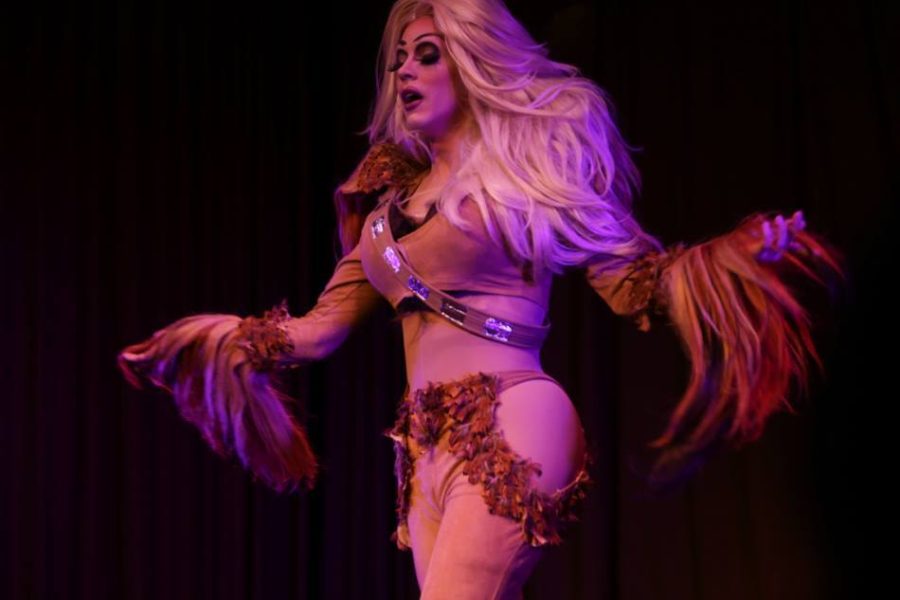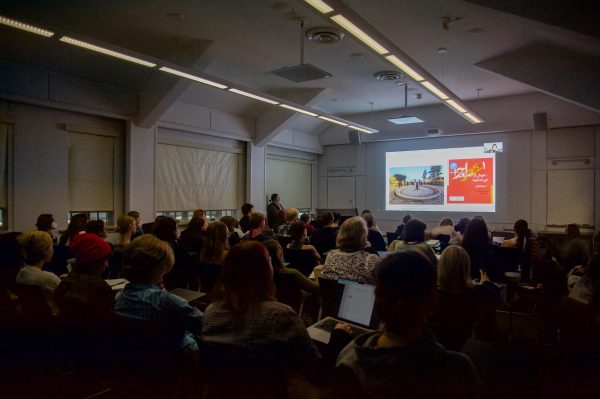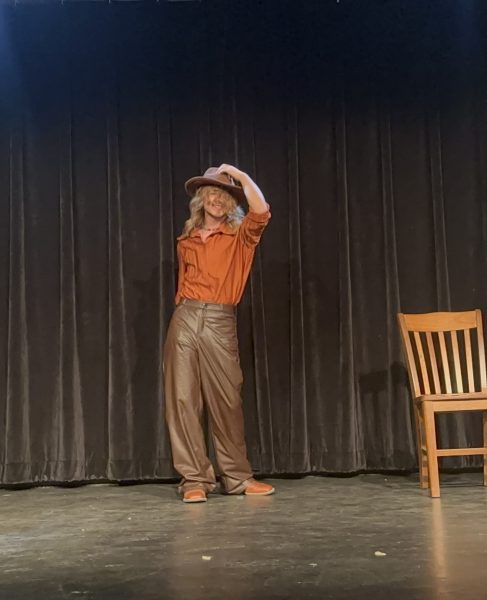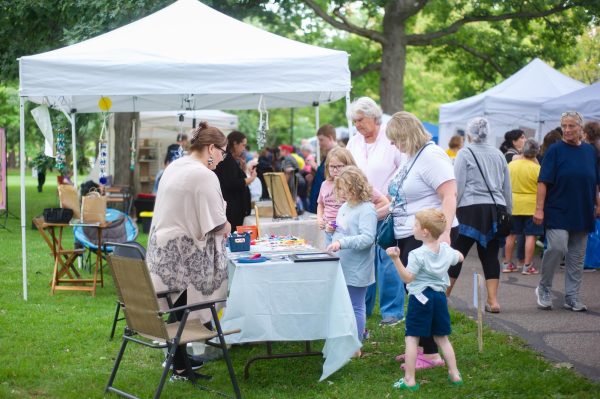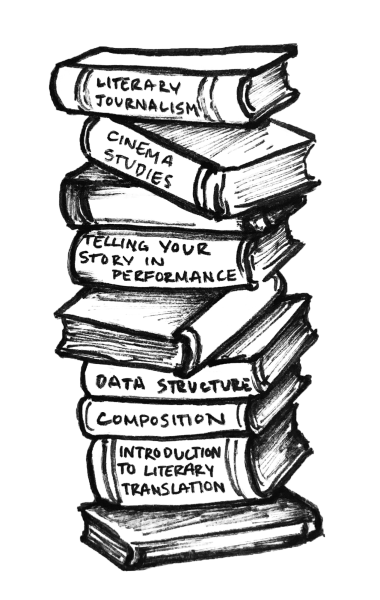On the Record with Dr. Lady J: Performer, Educator, Activist, MC
Dr. Lady J performed at Drag Ball April 22.
Dr. Lady J is a non-binary trans woman and drag performer. She received her Ph.D. in Musicology from Case Western Reserve University in 2017. She gave a talk on the history of drag titled “The War on Drag” on April 19 and performed an act in armor destroying posters representing trans issues at Drag Ball on April 22.
This interview has been edited for length and clarity.
What drew you to drag as a performance art?
Itʼs the one thing where you can become anything you want to be. My primary thing is being a storyteller, and what I like about drag is that you can kind of use pop culture, music, and film clips to insert your own voice to tell any story you want. What are the stories that you started out telling with drag and how has that shifted into the stories that you tell today?
When I started, they were more oriented around what I was capable of. At the time, I didnʼt know how to make mixes; I didnʼt know how to do more complex drag looks or costumes. So I was kind of stuck in a space of female impersonation-style drag.
Once I started being able to make mixes, the stories that I could tell changed dramatically. Once I learned how to make props, that really helped add another layer. Learning to make new things and learning new skills helps you start telling the stories you want to tell. One of the numbers that I have analyzed a lot in talking about my career that I think is more indicative of where Iʼm at now is the “Women Who Slay” mix. My “Women Who Slay” mix is based around a metal song by In This Moment, but it has interspersed quotes from Buffy the Vampire Slayer. It ends with the battle between AON and the Witch King at the very end of it, and Iʼd behead my partner, who is dressed with the witch king head on, to end the whole thing.
I wanted a number that was specifically anti-man, if Iʼm honest. I wanted a number that was about heroes, but I didnʼt want to do the usual goody two-shoes heroes. I wanted to specifically use deadly female assassins who are heroic but who do kill their enemies.
Thatʼs more of the stories Iʼve been telling now — things that to me feel much more directly political, that are much more directly making a statement about either the world or my experience of the world.
You began your academic career as a rock and roll historian. How do you think the culture of rock and roll has influenced your drag?
The stereotypical image of a drag queen is a glamor queen. The idea is very based in white wealth, the fashion industry, or glamor. I donʼt want everything I do to be an easy pill to swallow. A lot of performers, if you talk to them about why they do what they do, one of the things theyʼll say is, “I wanna make the audience happy.” Thatʼs not my goal. I want to make the trans people in my crowd feel seen. I want the women in my crowd to feel seen.
In rock and roll history, the story of women is generally deemphasized because the people who are telling that story are generally men, cis men who are white, who believe that virtuosic guitar skills are the ultimate end-all-be-all of rock music. Thatʼs a lot of stuff I argued against as a rock and roll history specialist, and then I tried to bring those ideas into what I do as a drag performer.
Rock and roll is very political, and being a trans woman, I felt like every other image presented to me by most other trans women in the drag world that I have engaged with has been glamor drag, and I was like, “We as trans women are allowed to be butch too.” Why canʼt I come out here and act like Suzi Quatro?
Could you talk about how you came up with the act you performed on Saturday?
I have been wanting to go and do something like that for a long time. I just didnʼt know how to build it. But the impetus for that came about with this year. I felt the need, rather than just a desire, to create this number because of what is happening with trans and drag-oriented legislation. Seeing that happen made me feel like I wanted to step up as an LGBT activist and do something that was really in your face and really straightforward, where you didnʼt have to think about what the message was.
I made myself a rule years ago that I would never do what I did, which is put signs with words on them. But I just kept thinking, I have to do this number this way because I need people to feel that release — we are all so f*cking angry right now, and I think we need a moment of aggression and rage. I think that we deserve that as trans people.
But I also wanted to provide a hero. I wanted to make it so that I step into this role and pretend that it is this symbol, that we can just knock all these things down and let people feel that we as drag performers are not just going to respond to this in interviews, we are not just going to respond to this in talks, but Iʼm going to do this in my performances. I donʼt really do any of that for cis people at all. I really do that so that trans people feel seen and heard about what is going on for the length of that number.
Doing it in a place where I got to do the talk first was really special for me because it allowed me for once to show an audience how all my work connects. I donʼt usually get to do that.
How has your conceptualization of femininity shifted as youʼve come into your identity as a non-binary trans woman?
I feel that my definition of it has changed as to what Iʼm willing to show and share with people. When I started doing drag in Cleveland, I identified as a straight person. I identified as a boy or genderfluid.
When I started doing drag, my female impersonation-style look, which was all I was taught how to do, made me very dysphoric. It made me feel terrible doing drag because it was like I was putting on the face I wanted to have and then having to take that back off. What I have found over time is that when I switched to the super goth mom look that I have now, it allowed me to feel more like this is a mask that I put on and I take off to become this larger-than-life figure who can say and do these things that I canʼt quite express and do in the world. Having that happen allowed me to feel and start reckoning with who is under the mask.


